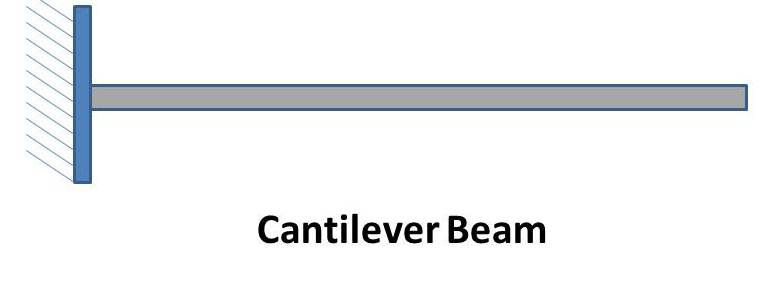CLASSIFICATION OF BEAMS
- Sonam Shivam

- Jan 28, 2017
- 2 min read

Beam : Beam is a structural member which is acted upon by a system of external loads at right angles to the axis.
It is typically used for resisting vertical loads, shear forces and bending moments.
CLASSIFICATION OF BEAMS : Depending upon the type of supports, beams are classified as follows :
1) Cantilever
2) Simply (or freely) supported beam
3) Overhanging beam
4) Fixed beam
5) Continuous beam
CANTILEVER : A cantilever is a beam whose one end is fixed and the other end free.
In other words, a cantilever is a beam anchored at only one end. The beam carries the load to the support where it is forced against by a moment and shear stress. Cantilevers can also be constructed with trusses or slabs.

SIMPLY SUPPORTED BEAM : A simply supported beam is one whose ends freely rest on walls or columns or knife edges. In all such cases, the reaction is upwards.
It is the one of the simplest structural elements in existence.
It is the type of beam that has pinned support at one end and roller support at the other end. Depending on the load applied, it undergoes shearing and bending.

OVERHANGING BEAM : An overhanging beam is one in which the supports are not situated at the ends i.e. one or both the ends project beyond the supports.

FIXED BEAM : A fixed beam is one whose both ends are rigidly fixed or built in into its supporting walls or columns.

CONTINUOUS BEAM : A continuous beam is one which has more than two supports. The supports at the extreme left and right are called the end supports and all other supports except the extreme are called intermediate supports.

It may be noted that the first three types of beams (i.e. cantilevers, simply supported beams and overhanging beam) are known as Statically Determinate Beams as the reactions of these beams at their supports can be determined by the use of equations of static equilibrium and the reactions are independent of the deformation of beams.
The last two types of beams ( i.e. fixed beams and continuous beams) are known as Statically Indeterminate Beams as their reactions cannot be determined by the use of equations of static equilibrium.
















Comments